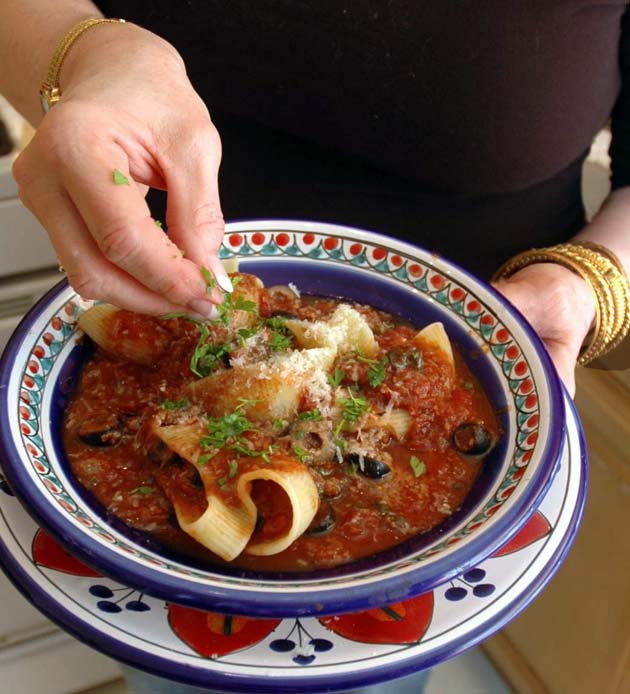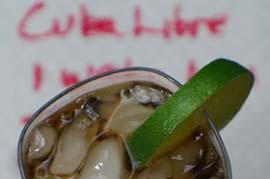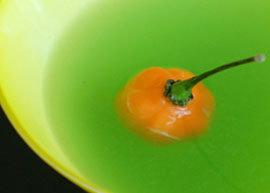Some nights I leave my office dog-tired and hungry. The last thing on my mind is a stop at the market, but take-out food is expensive and often mediocre. At times like this my well-stocked pantry saves the day. I keep it filled with basic and specialty ingredients for my every mood, making meals like pasta puttanesca possible at a moment’s notice.
“Sugo alla puttanesca” literally translates to “whore’s sauce.” The bold, spicy dish was originally conjured up by the prostitutes of Naples, Italy. As word of this amazing sauce spread beyond its native region, puttanesca became wildly popular in the 1960’s. Today, cooks like me depend on its lusty goodness when throwing together a quick meal of pasta, garlic bread and red wine.
I grabbed my big iron skillet and the puttanesca basics: a large tin of Modena tomatoes, some black olives, capers, anchovies, garlic, olive oil, dried herbs and a bag of pasta. Over the years I’ve pumped up the flavor with sautéed onions, a bit of red wine and parmesan-reggiano cheese.
Like magic, the woes of the day faded as quickly as the sauce came together, filling the house with its pungent garlic scent. Soon the family made their way to the kitchen in anticipation.
I poured some wine, stirred the sauce and told everyone how the Neapolitan ladies-of-the-night enticed customers in with their simmering sauce. This was an especially clever tactic when you consider that brothels were required to keep their windows covered to avoid offending the neighbors. Unable to visually flaunt their wares, the savvy professionals appealed to their customers’ sense of smell instead. How, they must have reasoned, could men returning home after a hard day’s work resist the scent of garlic and all good things to come?
Pasta puttanesca is one of the easiest dishes around when you know a few secrets. First, unless you are surrounded with anchovy lovers, never, never volunteer that you’ve included them in the sauce. People get positively wiggy, wrinkle their noses, flail their hands in disgust and often pass on the sauce. Trust me—anchovies do not make puttanesca fishy or evil-tasting. In fact, they cook down and disappear into the liquid, adding a sophisticated layer of flavor not possible without the little critters.
Great sauce requires well-prepared—restaurant quality—pasta. Puttanesca is traditionally served with spaghetti or fettuccini but I prefer large pasta shells. They are “meatier” and fill with the warm spicy sauce, providing savory bursts of flavor with every bite. For perfectly cooked pasta, salt your cooking water like the Mediterranean—a handful in a big pot of water. Go ahead – don’t be shy; the pasta only absorbs a small amount of the salt.
After draining, never rinse your pasta with water or you’ll remove all the starch needed for the sauce to adhere. You also run the risk of creating a watery sauce. That said, always retain a cup or two of the salted cooking water to thin the sauce if required. It’s much better than using plain water.
I swear by one final professional touch: remove the pasta from its cooking water a minute early, drain it and mix it into the simmering sauce to finish cooking. The pasta absorbs all of the sauce’s good flavors, making your dish truly memorable.
Breathe in—then dig in. This is my idea of spicy, fast and easy. Now please excuse me while I close the blinds.
Print a copy of Pasta Puttanesca and How To Cook Perfect Pasta.



















this is one of my favorite dishes and your instructions for cooking pasta are right on!!!
http://eatlovebikini.blogspot.com/